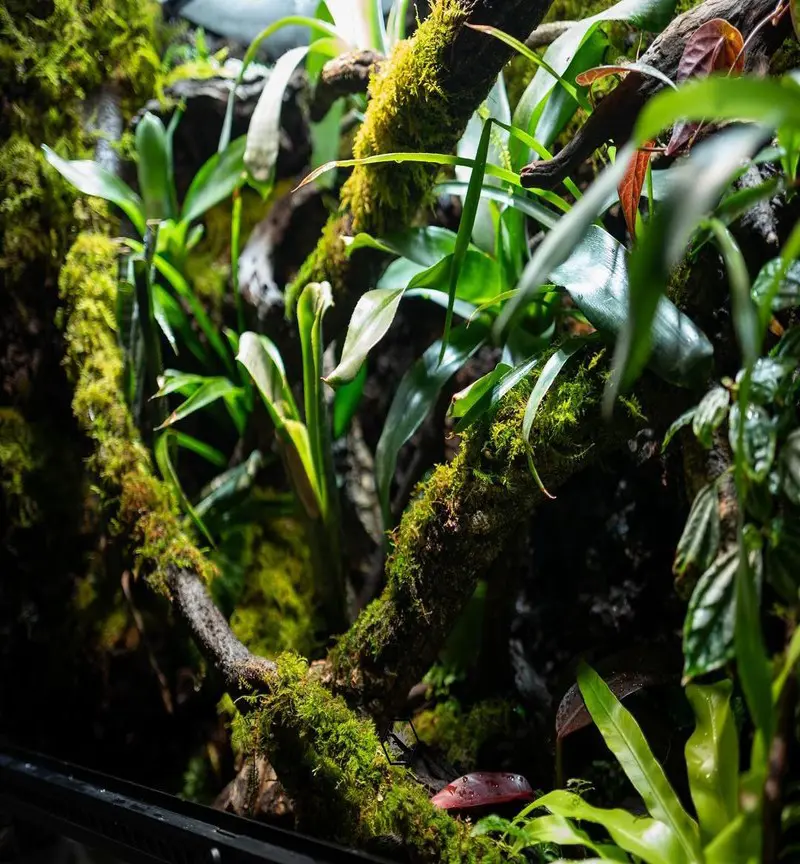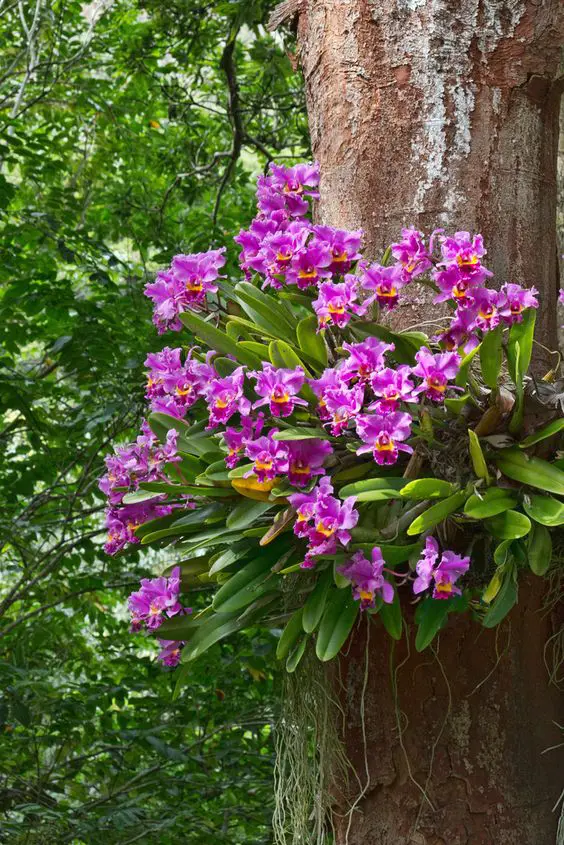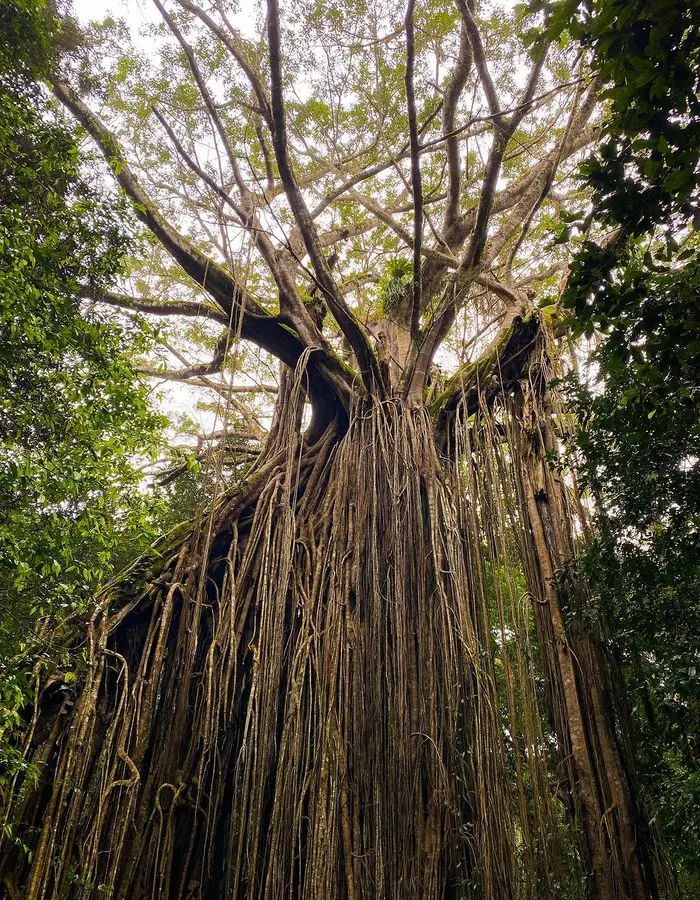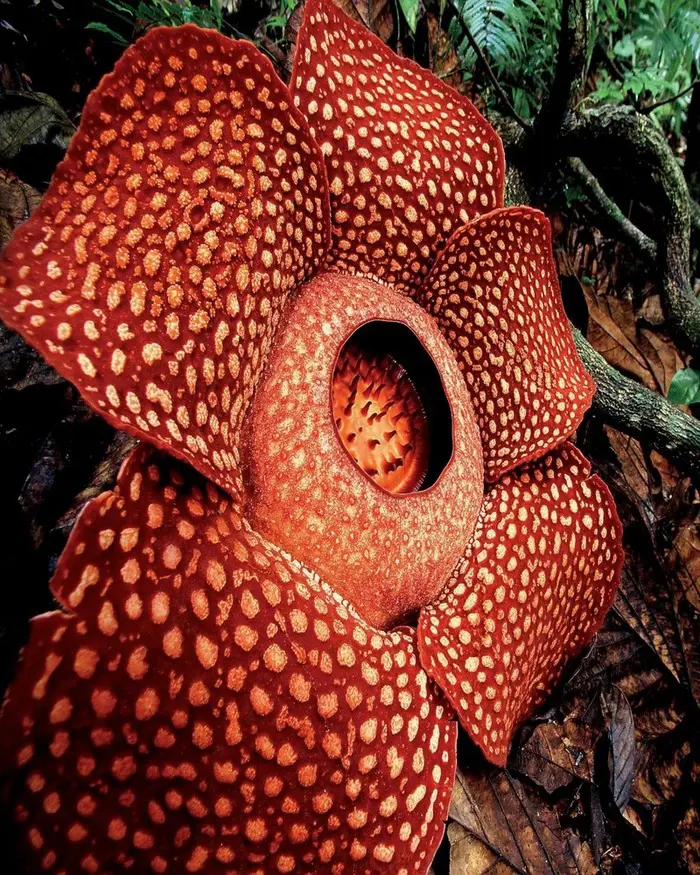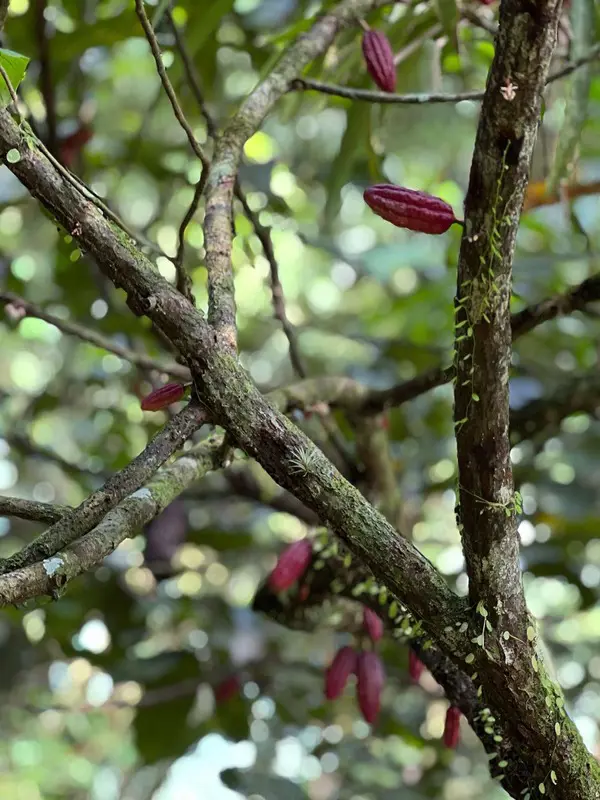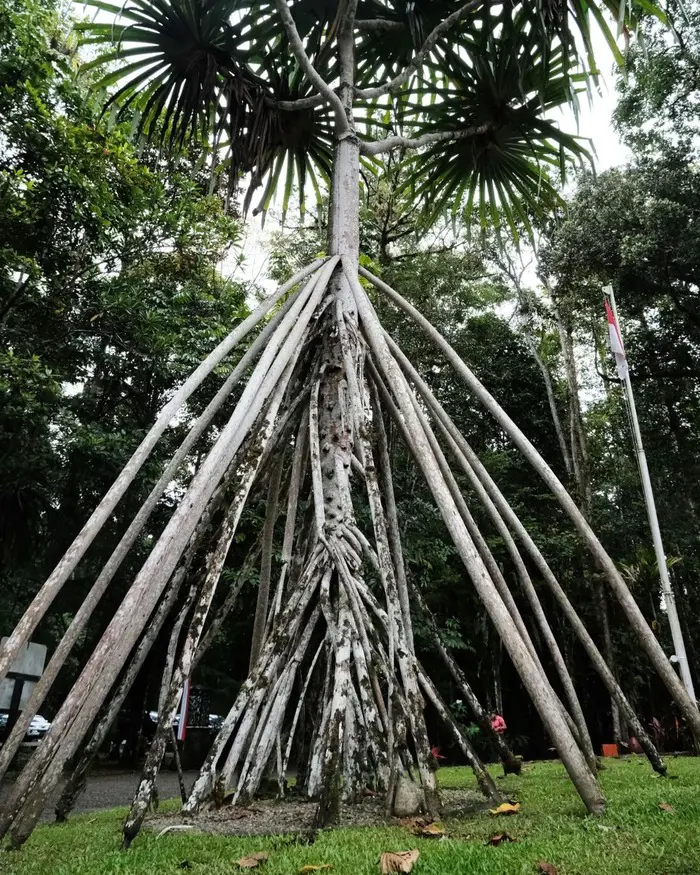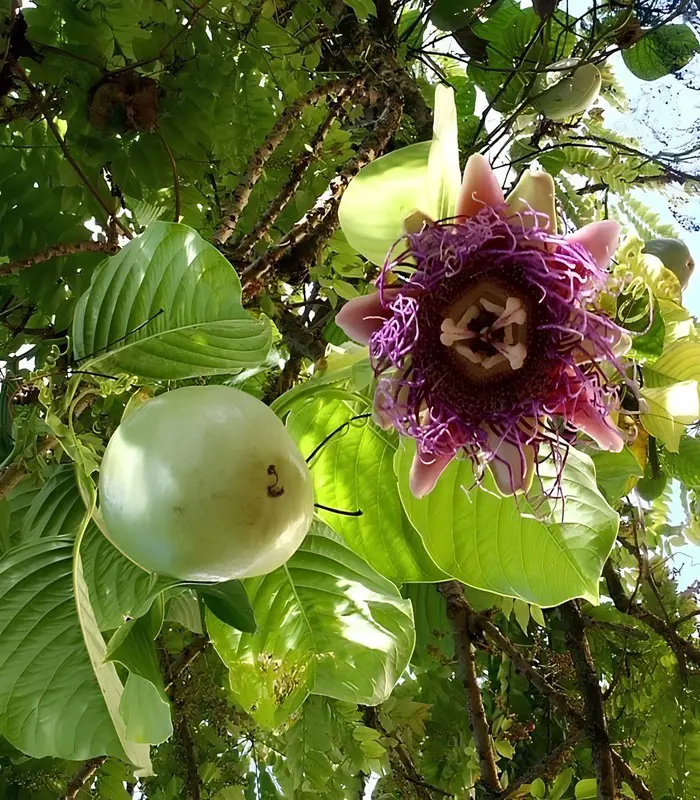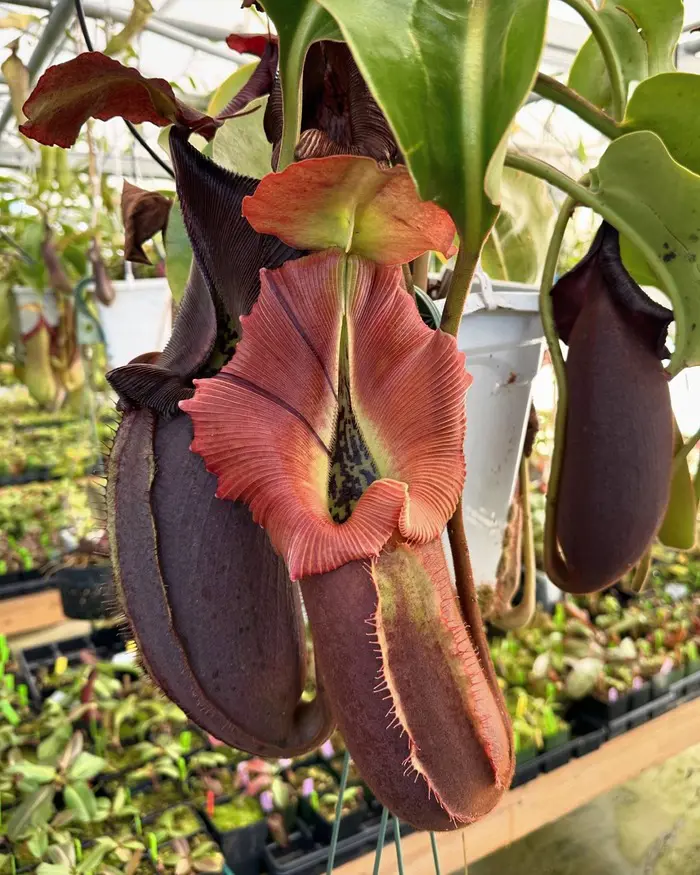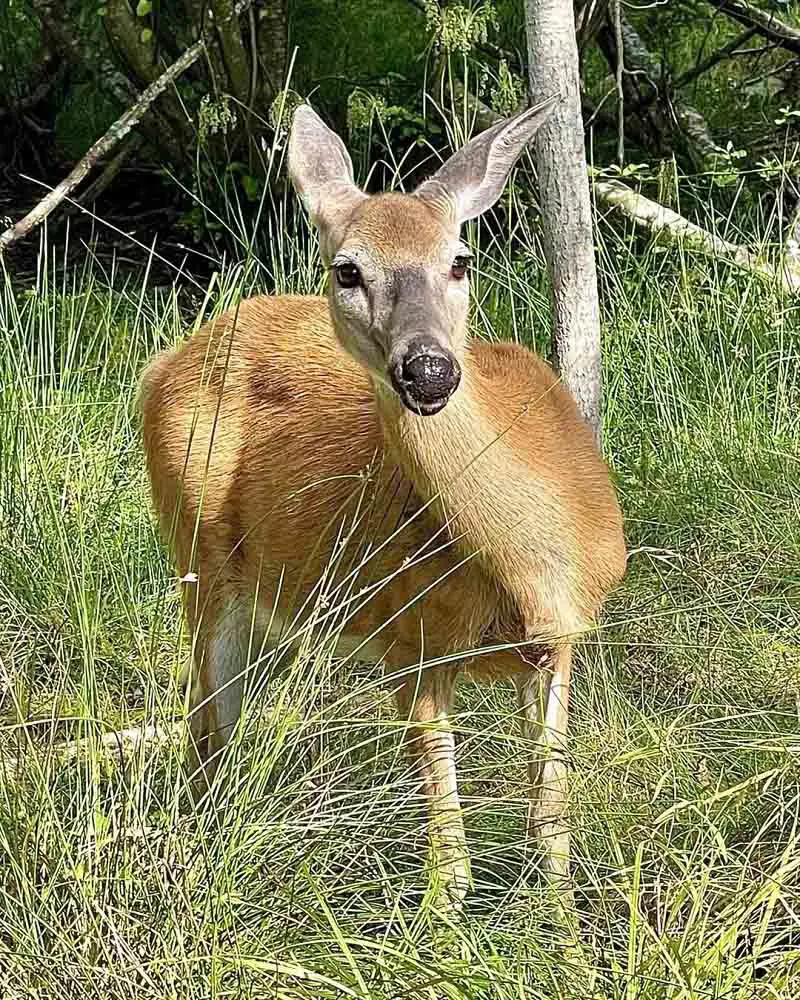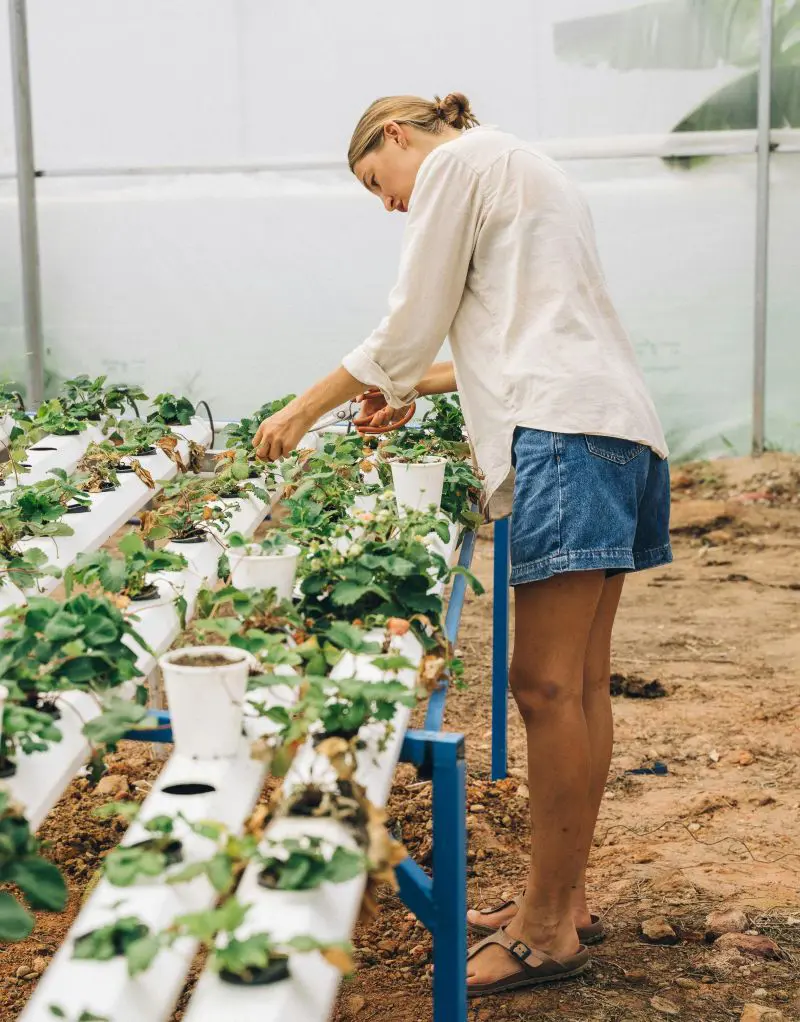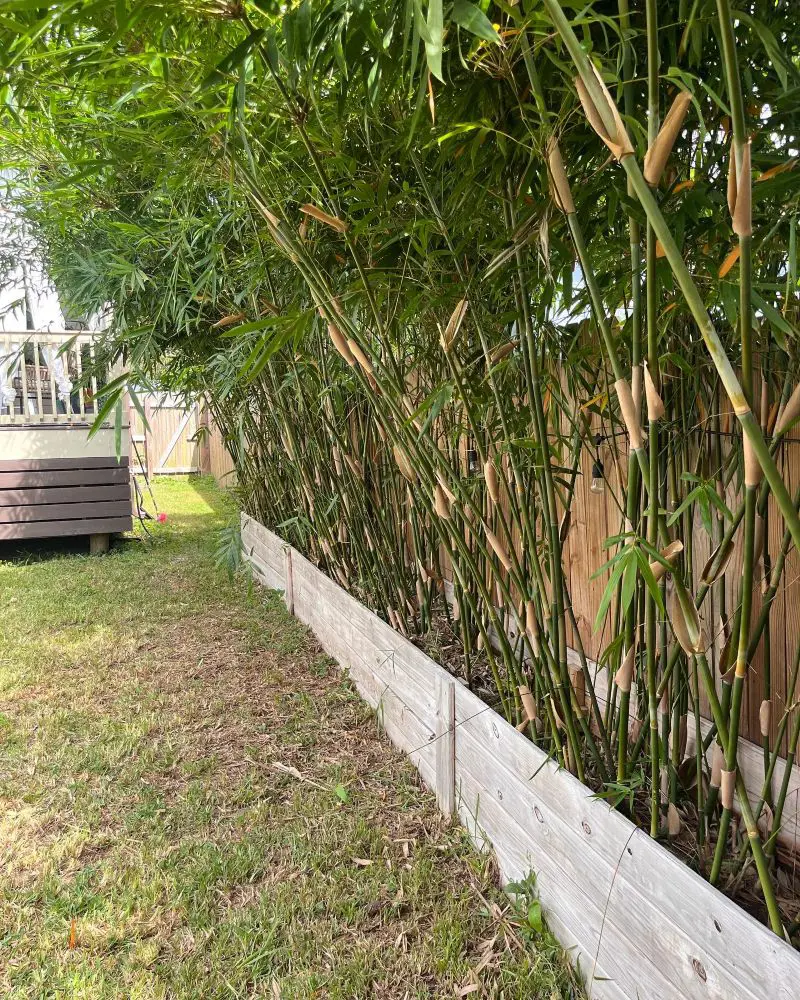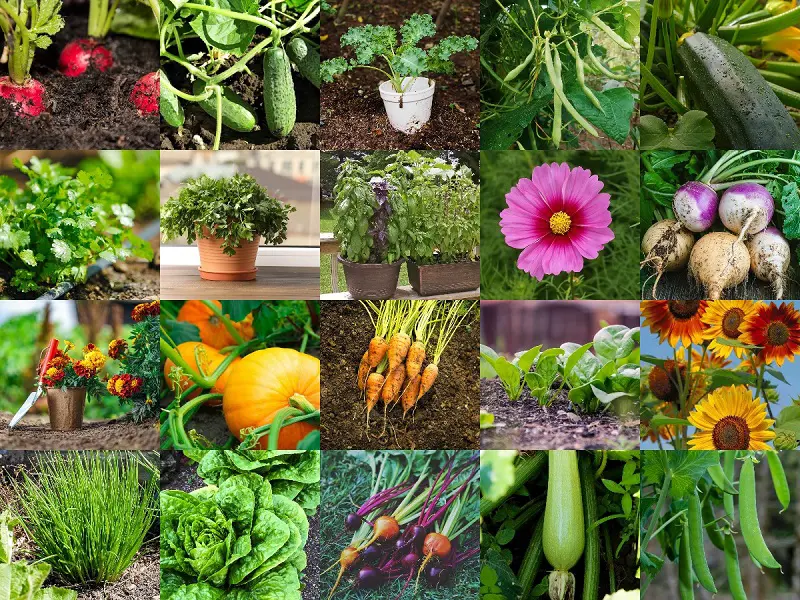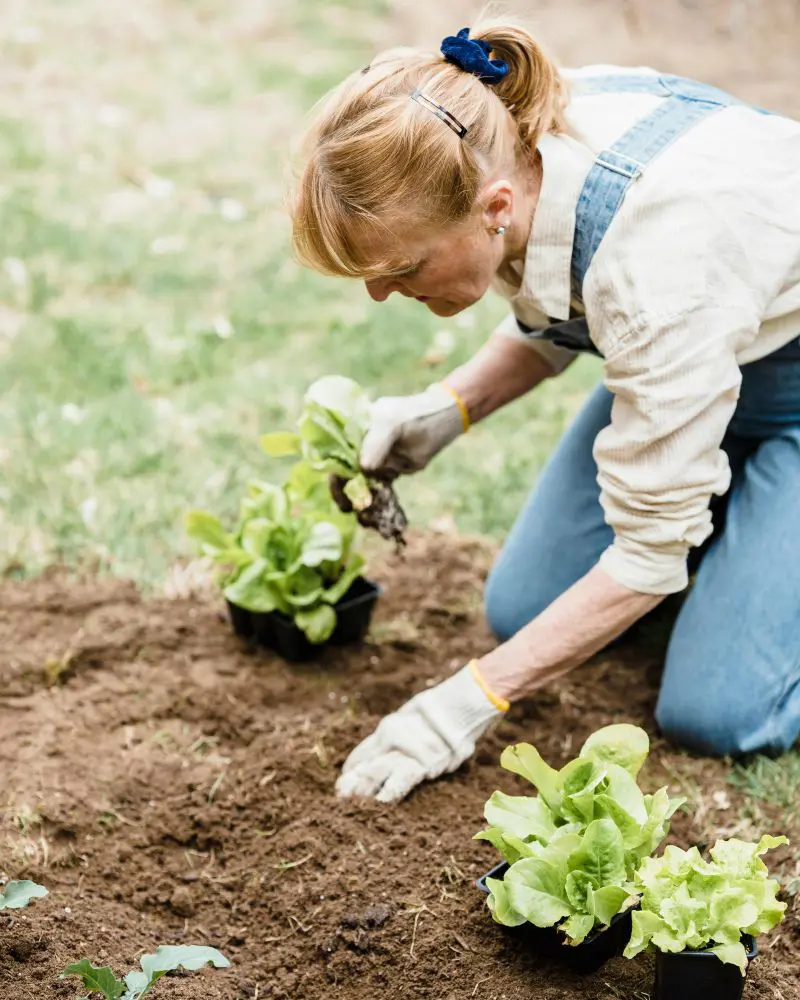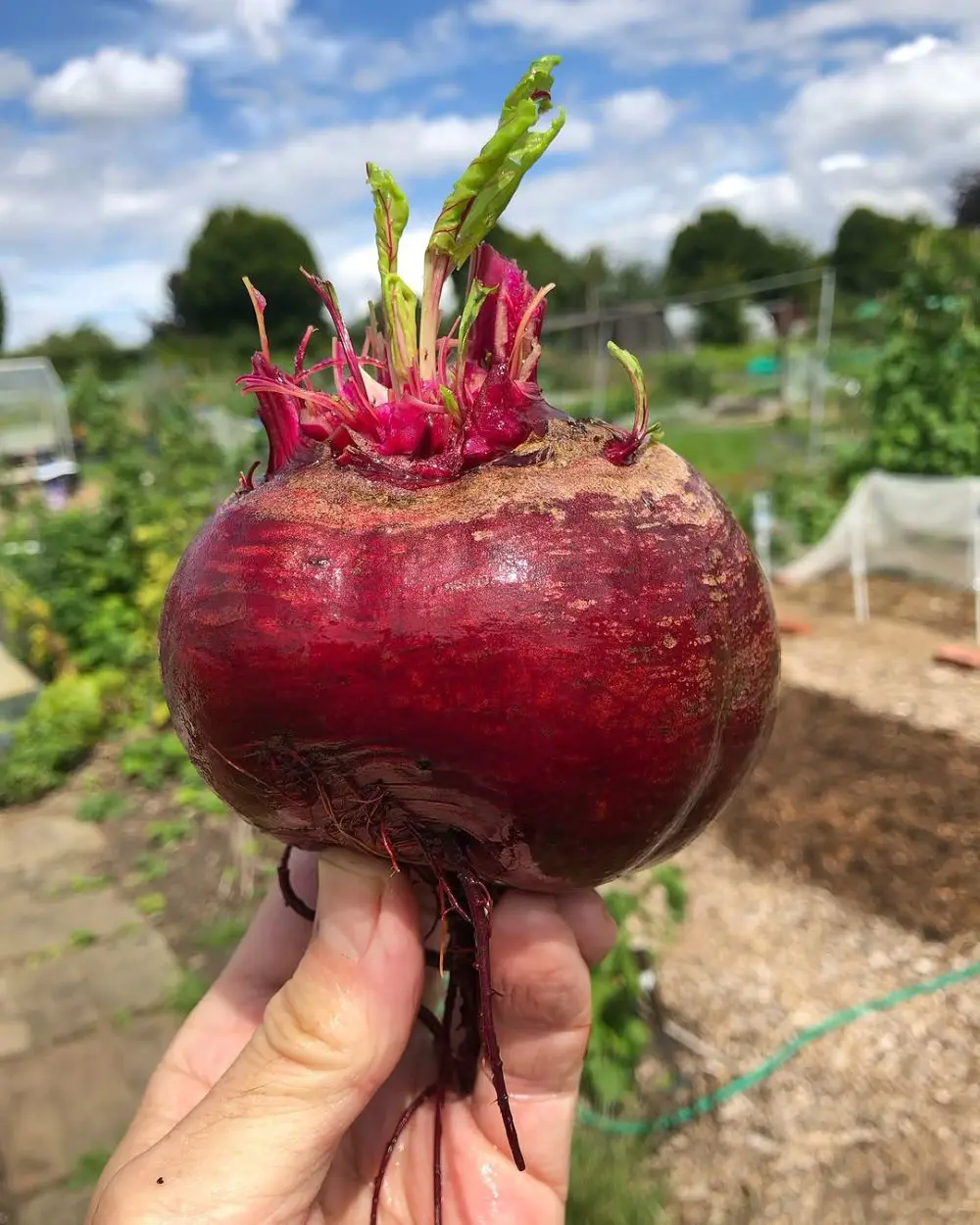1. Kapok Tree
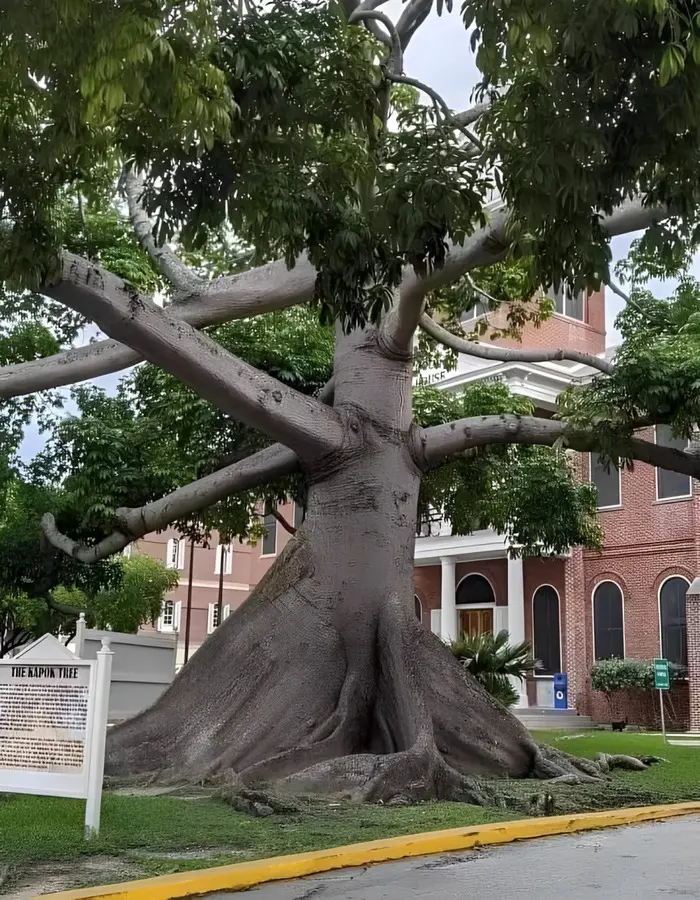
- Plant Type: Tree
- Plant Size: Up to 200 feet tall
- Scientific Name: Ceiba pentandra
The Kapok tree, also known as the Ceiba tree, is one of the giants of the tropical rainforest. It can grow up to 200 feet tall and has a straight, cylindrical trunk that supports a massive canopy.
The trunk is often covered with large, sharp spines, and its branches are covered with epiphytes like orchids and bromeliads. The Kapok tree is essential to the rainforest ecosystem, providing habitat and food for various animals.

